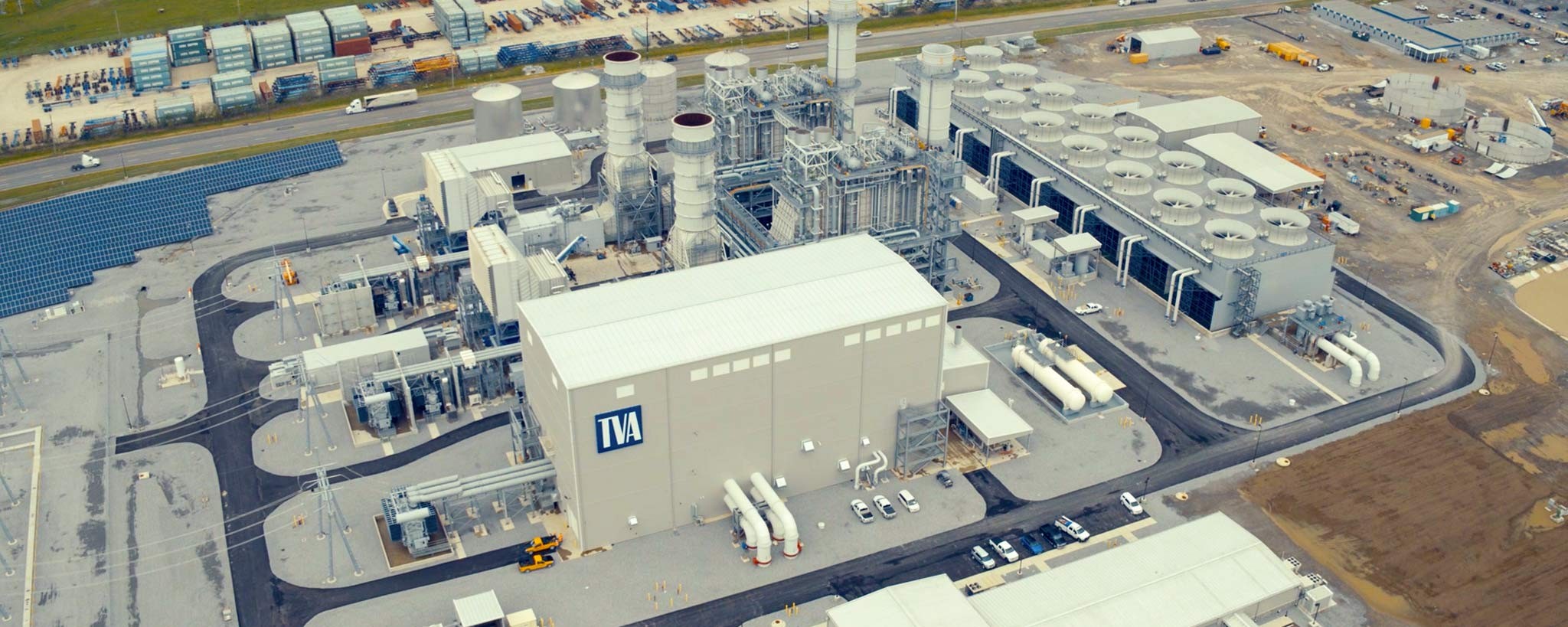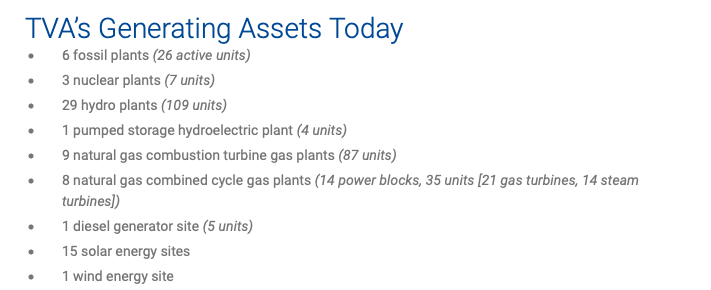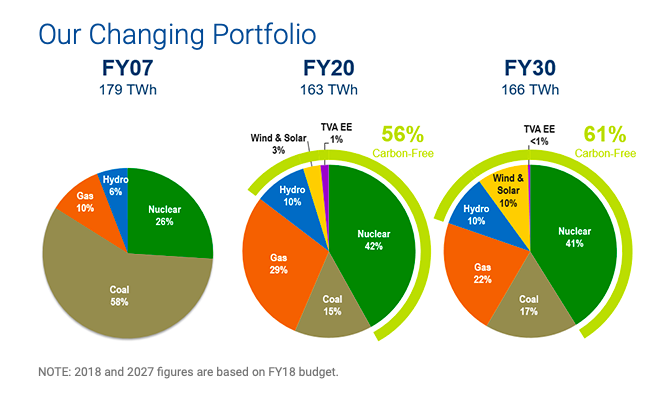 TVA
TVA
TVA’s new natural-gas-fueled Combined Cycle Plant.
Experts say Memphis could save even more money now on a switch to renewable energy than the $240 million to $333 million they predicted it could back in January.
Those early projections came from Friends of the Earth (FOE), an environmental advocacy group. That group ordered a study of the switch from the Boston-based Brattle Group, an “energy, economic, and financial research group that advises major energy providers, utilities, and governments around the country and across the globe.”
The study comes as Memphis Light, Gas & Water (MLGW) reviews a possible switch away from the Tennessee Valley Authority (TVA) for its power. In April, MLGW formed an advisory council to weigh the option of alternative power sources. 
MLGW picked Siemens to develop an integrated resources plan (IRP), a document to help the team determine the most viable options it should consider. Since April, the Power Supply Advisory Team (PSAT) has met five times. It meets again on Monday, September 16th from 10 a.m.-2 p.m. at First Baptist Church on Broad Ave.
FOE tapped Brattle again for an updated version of the numbers as they suspected more savings could be reaped now by the switch on lower market prices for solar and wind energy.
“We think the IRP has to have the most up-to-date, cutting edge information,” said Damon Moglen, senior strategic advisor with FOE. “We think the Brattle report produced in January is absolutely a timely analysis but the IRP has just been launched. So, we wanted (Brattle) to dive back in there and take a look. As, (Brattle principal and study author Jürgen Weiss) says, our first report, which already said there was much to be gained, was conservative.”
The new report does not predict even more headline-grabbing savings in the hundreds of millions of dollars. Instead, it notes that the price of equipment, like solar panels, has fallen and so has the cost to run them. The cost of wind contracts, it says, has fallen substantially since the earlier report, too. All of the data, Weiss said, is based on numbers from the National Renewable Energy Laboratory.
 TVA
TVA
So, while the updated figures strengthens the FOE’s earlier findings (and, it hopes, its argument for Memphis to switch to renewables), the crux is this:
“The new report suggest that the costs Memphis would likely incur if it developed a substantial portfolio of renewable resources as part of its supply mix would be even lower than they calculated in the January 2019 report,” reads a news release on the matter.
The first report was based on a set of assumptions on how the costs of wind and solar would decline over the next few decades. Those assumptions, Weiss said, were “conservative, pessimistic about how rapidly the cost of these resources would decline.”
Weiss said the cost of solar has dropped 20 percent over the last decade. Wind power has dropped by 10 percent in the same time. Those costs are falling at a more rapid rate now and will most likely keep falling in the future.
Making the switch to renewable energy would achieve three primary things for Memphis, Weiss said. It would lower the cost of power, clean up that power, and give the city greater control over where its power comes from.
 TVA
TVA
TVA’s current mix of energy is about 29 percent gas, 15 percent coal, 42 percent nuclear, 10 percent hydro-electric, and 3 percent wind and solar. TVA plans to make wind and solar 10 percent of its total energy mix by 2030. By that year, 61 percent of TVA’s overall energy sources would be carbon free, according to the utility. (That mix includes 41 percent nuclear power.)
Moglen said TVA looks like “failed energy systems of the 20th century that got us into the problem that we’re in now with climate change and fossil fuels.”
“Memphis has an opportunity to to think about what it looks like to run such a (renewable) system in the 21st century, not the 20th century, and TVA just isn’t making that transition,” Moglen said.
Either way, Memphis has a choice. That choice will come from MLGW, of course. But likely the final vote on such a move would come down to the Memphis City Council.
Herman Morris, the once-CEO of MLGW and now a member of FOE, said it will be a tough choice but that the job is “full of tough choices.” Morris said there’s a risk in doing nothing — in staying with TVA — because it’s been a reliable source of energy.
“If you’re on the C-suite, on the board, or on the city council, you’ve got to make a 20-30-50-year decision,” Morris said. “What you’ve got to decide, basically, is whether you’re going to be on the past or on the future. The decision point on this will be whether or not the future of energy is going to be what TVA’s strong suit is, fossil fuels, coal, gas, and nukes.”
TVA’s Scott Brooks said Thursday that while his agency has not reviewed the report in full, it “appears to advocate a future that is uncertain at best.”
“We can refer back to conclusions from TVA’s 2019 Integrated Resource Plan, which also assumes a substantial increase in renewable resources for TVA, particularly solar,” Brooks said.
“However, the IRP also acknowledges the reality that renewable energy is not a guaranteed source of baseload power, and would require the addition of small natural gas units to supplement the power when the sun doesn’t shine and the wind doesn’t blow.
“Simply relying on the declining cost of the sources ignores the reality of the investments that would be required to ensure reliability.
“That said, we remain confident that TVA is the best option for MLGW and the region’s future energy needs. Of course, the final decision is in the hands of the consumers and MLGW.”



 TVA
TVA 
 TVA
TVA  TVA
TVA 


 USGS
USGS 